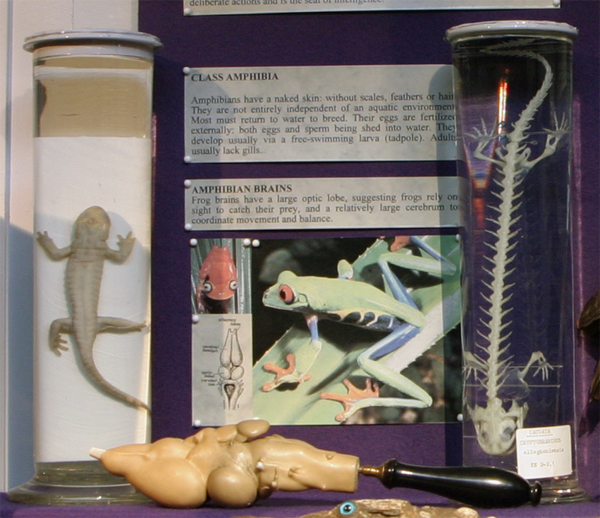
CLASS AMPHIBIA
Amphibians have a naked skin: without scales, feathers or hair. They are not entirely independent of an aquatic environment. Most must return to water to breed. Their eggs are fertilized externally: both eggs and sperm being shed into water. They develop usually via a free-swimming larva (tadpole). Adults usually lack gills.

The entire salamander (left) and salamander skeleton (right) illustrate the typical features of amphibians. The skeleton with four pentadactyl limbs reveals the typical organization of tetrapod limbs. The frog brain (centre) has a large optic lobe, suggesting that frogs rely on sight to catch their prey, and a relatively large cerebrum to coordinate movement and balance.






